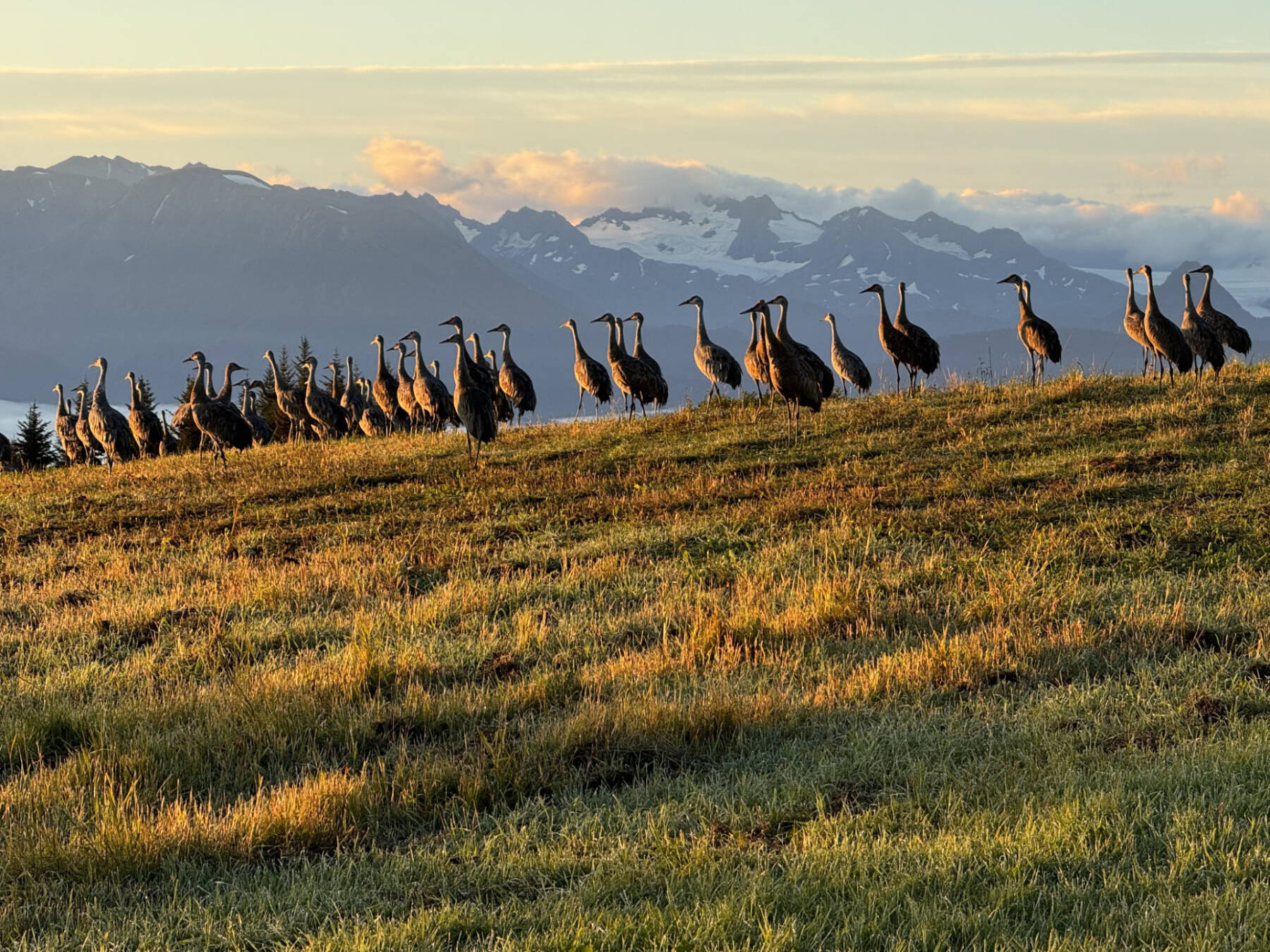The first cranes of the year have been spotted returning to Kachemak Bay. Kachemak Crane Watch’s Nina Faust said Monday that a pair was recorded flying over Seaside Farm on March 29 and five were reported flying over Beluga Slough on April 7.
The annual return of sandhill cranes to the area signals the start of the summer season for many Homer locals. The curious birds are often spotted in neighborhoods and cul-de-sacs around town.
Faust says that she believes the cranes became so comfortable with close human presence during the 1980s, when excessive feeding of eagles led to a population boom that put pressure on the crane population. Perhaps seeking safety from the eagles, the cranes were spotted more frequently in town by residents.
Faust said that while she was unsure of exact numbers, there were only a handful of the cranes counted in the area a few decades ago. By now, the local population has blossomed to more than 600 estimated birds, with Kachemak Crane Watch and Faust monitoring 50-60 breed pairs in the area.
For those new to the area or perhaps unfamiliar with proper sandhill cranes etiquette, Faust said the habitual creatures often return to the same yards and neighborhoods in the area where they’ve lived before or where they were raised. They can survive without a supplemented feeding of corn, and it is not suggested to leave big piles of food out for them, as it may attract potentially dangerous predators to the area.
Additionally, you should never attempt to hand-feed a crane, as their bills are long, strong and very sharp. Faust says you shouldn’t search for the crane’s nests, but you should report nesting pairs and their location to support monitoring and counting efforts.
The cranes generally arrive in the Homer area toward the end of April and beginning of May. Faust said crane eggs have a 30-day incubation period, after which the fledglings — called colts — are mobile and able to feed themselves within days of hatching. It takes about 60-70 days before the colts are strong enough to begin fully flying.
All cranes experience a period of time known as “migrational unrest” toward the end of August and beginning of September, when they begin preparing for the long flight back to their winter stomping grounds.
You can report nesting sandhill crane pairs to Kachemak Crane Watch at reports@cranewatch.org or by calling 907-235-6262. They ask that you leave your name, phone number, and the location and date when nesting started. KCW does not share nesting site locations with the public for the safety of the cranes and privacy of their human neighbors.
For more information you can visit Kachemak Crane Watch online at cranewatch.org or by contacting Nina Faust at 235-6262 or reports@cranewatch.org.
Reach reporter Chloe Pleznac at chloe.pleznac@homernews.com.



